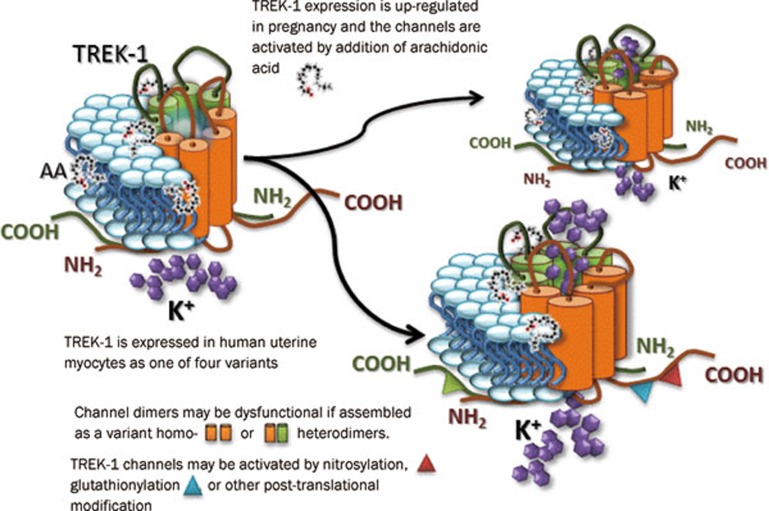Figure 1.
TREK-1 concept. Pregnancy results in up-regulation of channel number and provides for activation by stretch (right-hand figures) and arachidonic acid. The presence of channel variants (depicted as 2, 4-transmembrane units of disparate color) could result in assembly of channels that exhibit altered function or are dysfunctional. Altered conductance may be accompanied by disparate activation characteristics. Posttranslational alteration by nitrosylation, glutathionylation and or phosphorylation may confer sites of disparate regulation in preterm labor. Multimodal activation by stretch, heat, depolarization, intracellular acidosis, lipids and volatile anesthetics has been reviewed42. TREK-1 is tonically inhibited by the actin cytoskeleton opening the possibility that pregnancy releases such inhibition through cytoskeletal reorganization. Protonation of a glutamic acid residue within the C-terminus of TREK-1 increases the affinity of this domain for inner leaflet phospholipids and increases activity. Stimulation of Gq-coupled extracellular receptors can inhibit TREK-1. A variety of possibilities for regulation of the TREK-1 channel in the uterine myocyte suggests that studies of TREK-1 may reveal a therapeutic target for preterm labor.

